Byzantium (2012)
Directed by: Neil Jordan
Written by: Moira Buffini
Starring: Caleb Landry Jones, Gemma Arterton, Jonny Lee Miller, Saoirse Ronan
IN CINEMAS NOW
RUNNING TIME: 118 min
REVIEWED BY: Dr Lenera, Official HCF Critic
Single mother Clara and her daughter Eleanor are vampires who are constantly on the run, moving from town to town and living on the edges of society. Clara supports them by working as a lap dancer or a prostitute or a madam, while Eleanor struggles with the isolation of their nomadic existence and longs to tell someone their secret – they are hundreds of years old and survive by drinking blood, though Eleanor only kills people who wish for death. When they arrive in the decaying seaside town of Hastings, Clara meets Noel, who has inherited a rundown guest house called Byzantium from his late mother. Clara sees the chance to turn the former hotel into a brothel, while Eleanor befriends Frank, a local boy who is quickly smitten by her. But Clara’s rules forbid telling their secret or getting emotionally attached to anyone…..
It’s as if Mary Shelley and Edgar Allan Poe had got together and had a strange little child.
Well, any film that boasts that a line like that is worthy of my time in my opinion, but then again I was looking forward to Byzantium for some time. Neil Jordan isn’t really considered a ‘horror director’, but he has made three films – A Company Of Wolves, Interview With A Vampire and In Dreams – which are very fine examples of the genre indeed [and yes, I include the incredibly misunderstood and underrated In Dreams, a film which I only had the pleasure of seeing for the first time a few weeks ago and really wondered if I was seeing a different film to what most critics saw]. Well surprise surprise, Byzantium, despite appearing to have had some time getting its release over here in the UK [normally a sign of problems with the film in question], and yet to appear in the States [though it isn’t long before it does], is another very impressive excursion into horror. It treads a fine line between the unoriginal and the original, the cliched and the inventive, and, for the most part, pulls it off. It’s also an immensely involving drama that almost brought me to tears, so caught up was I in the story and the plight of the two main characters.
Now ask your average person [and I don’t mean this as an insult] to name a vampire film, book or character, and I reckon the first thing they will mention is bloody Twilight, because, for better or worse [well actually for worse, there’s no question about it in my mind], the books and even more so the films have been immensely popular, despite the horrid writing, dreadful plotting, awful acting, etc etc etc, on display. It can’t just be teenage girls; in fact, it isn’t, going by many conversations I have had with people. It’s often the case that if folk are bombarded with something, are saturated with it, they will grudgingly except it. I do think I speak for most horror fans, and lovers of vampires in general, when I say that Stephanie Meyer’s tripe has done considerable damage to the name of bloodsuckers. Now it’s not quite true that there hasn’t been decent vampire stuff recently. 30 Days Of Night was a lot of fun if somewhat forgettable, Let Me In about as good a remake as one can expect, and a few months I reviewed the very impressive low budget gem Midnight. I also have it on good authority that the TV show True Blood is no travesty either. Therefore I can’t really say that Jordan’s film restores some quality to the subject, but I do think it’s restored some of the ‘reputation’ of vampires, even if at the time of writing, it’s not going to be any kind of hit.
One of the best things about Byzantium, which is actually based on a play by the screenwriter, is its portrayal of its vampires. These nosferatu combine elements we all know and expect, with some new touches. They still feed on blood, but instead of fangs, all boast a long fingernail with which to draw blood. They don’t like walking around in the sunlight much, but are still able to without any trouble. To become a vampire, you don’t just get bitten, die and then come back to life. You have to travel to this strange island and undergo a ritual in a shrine where water running down a mountain in fountains turns to blood and hordes of birds fly around in a weird way. There is no mention of stakes or garlic. The vampire order in this film doesn’t even seem to accept women. And yet, the film is confident enough to have, for instance, a heroine who calls herself Carmilla and watches Dracula Prince Of Darkness on TV. It’s full of little bits and pieces which will make vampire movie fans to smile in recognition, the atmosphere and even at times the look recall The Hunger, and sometimes the tale seems to be providing variants on situations from Interview With The Vampire [not surprising really], yet none of this sticks out; everything is just an essential ingredient in the film’s melding of the old and the new.
The opening superbly contrasts the worlds of its two main characters. We see Clara performing a lap dance in a sleazy club, being found by someone looking for her, then bloodily killing him and sucking his blood, thereby telling us straight away how she survives and her attitude to being a vampire. She has no bones about mixing with humans, and using them to both get money and feed herself. This alternates with scenes of her daughter Eleanor, who is alone and befriends an old man, who, after [in a really touching moment], showing her photographs of a married woman he loved but never told of this love, realises what she is, and, knowing that his time is soon up, graciously allows her to drink his blood. Eleanor doesn’t like the company of humans, and is very sensitive about her vampirism, only willing to feast on people who want death to take them. The rest of the film, more than anything else, is about the frought relationship between mother and very different daughter. Writer Moira Buffini makes sure that it’s very hard for the viewer to take sides; the quiet, sensitive Eleanor was initially the character I immensely preferred, but as we get to know more about the more brash and seemingly slutty Clara, I wasn’t sure. There are times where she seems very cruel to her daughter, but we also know that she thinks she has Clara’s best interests at hand, even if she is somewhat wrongheaded about it.
I would have been content for the film to just follow Clara and Eleanor about Ireland, trying to survive, but it isn’t content to do that. Clara starts to set up a brothel and Eleanor forms a friendship with a boy who is slowly dying. Thankfully the latter part is portrayed in an un-mawkish way and I really cared about this relationship. Far more time is actually dedicated to filling in the background story of mother and daughter. We have the potentially awkward device of Eleanor constantly writing it all down and telling her story to various people she thinks won’t believe it, to be the excuse for all the flashbacks. This slightly interferes with the pacing as we almost forget the present day story, but Jordan just about gets away with things like having a flashback within a flashback. The story told is a very compelling and even quite upsetting one when it incorporates child prostitution, while the scenes of the mysterious island have a genuine magical feel, actually benefitting from certain things being rather vague. The film only really goes downhill a little bit towards the end. You will be able to predict most of what will happen: for instance, you know that the pursuers will eventually catch up with their quarry, and that mother and daughter will come to blows. Still, I suppose it’s very hard to come up with a truly original finish to something like this.
Despite what you may have read, Byzantium does not stint at the gore, with the red stuff frequently present, most notably in a shocking bit of business with a cheese-wire that reminded me of a certain scene in Nightmare Concert. It certainly wouldn’t have been a ‘15’ ten years ago with some of its ingredients, though Jordan also knows the value of subtlety and even gets away with vampirism scenes that are intended to be, and succeed in being, touching. Now you won’t be surprised when I say the Best Teenage Actress Of Her Generation is as great as usual. With her wise knowing eyes and slightly haunted features she is really is perfect to play a 200 year old vampire, and the depth of her performance here is enough to make me forgive her being in The Host [though I can’t name a single actress who could have made that part into something good]. The surprise for me though is Gemma Artherton, not formerly an actress I’ve rated in any way. She really conveys the hurt that her character carries with her over the centuries, and her brazen attitude that she utilises to try and conceal it. Jonny Lee Miller pops up sometimes in a notable role, though I kept looking for Stephen Rea. I couldn’t wait to see what Jordan’s usual composer Elliot Goldenthal would do with this material, but instead Javier Navarrete provides the music; the often mournful score is immensely effective and almost made me forget Goldenthal.
Jordan and his cinematographer Sean Bobbitt sometimes employ some nice visual quirks, such as often showing Eleanor through misty or patterned glass to enhance the sense of her isolation. Though it has the odd pacing and story issues and I could have certainly done with a better ending [though I can’t at the moment think of what I would have done], I found Byzantium pretty satisfying and, though it certainly isn’t necessary, I wouldn’t object to a sequel. A shame that the viewers of this film will be less than five percent of the viewers of the last Twilight movie. It is the best vampire film since Let The Right One In.

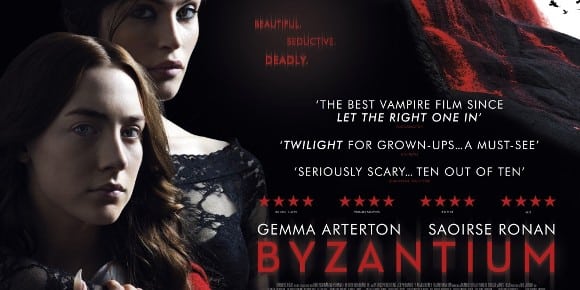
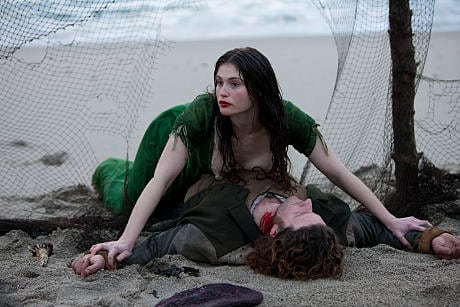




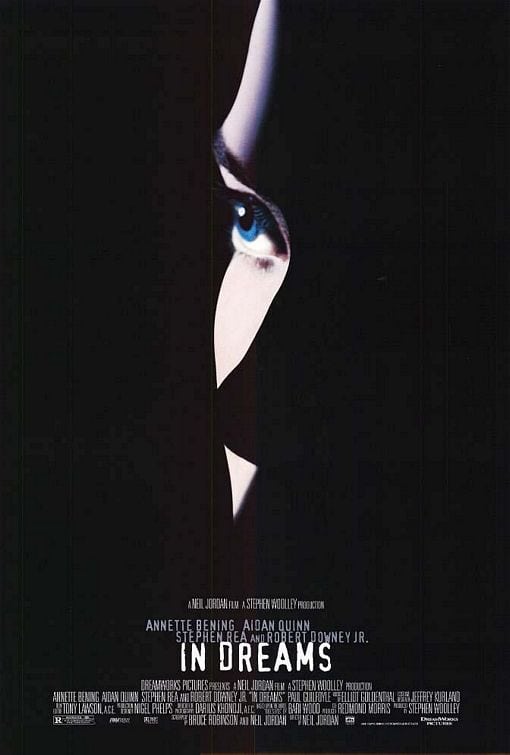
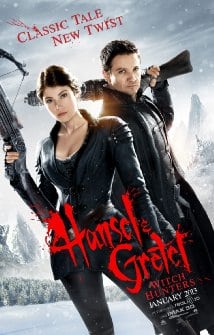
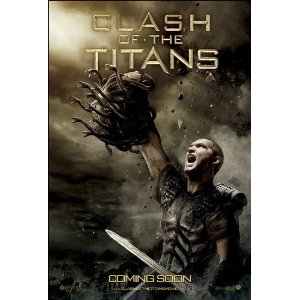
Be the first to comment